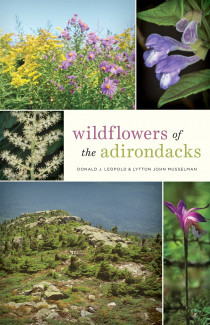Johns Hopkins UniversityEst. 1876
America’s First Research University
Wildflowers of the Adirondacks
Stunning. That was my impression on my first visit to the Adirondacks in summer 2009. I had recently spent considerable time in other beautiful areas but nothing compared to the majesty of the Adirondacks. It was a new world to me. The image of sky, water, and forests, the smell of the lake on that sunny day – stays with me.
I was invited by Professor Don Leopold to teach a botany course at the Cranberry Lake Biological Station that summer. I jumped at the opportunity because I taught at other field stations and always found the experience rewarding. As an avid botanist, dwelling right in the forest was an ideal setting to learn about the flora. And the privilege of teaching about plants only heightened the experience.
For several years I taught at Cranberry Lake and worked with Don Leopold learning his expertise in the flora and ecology of the Adirondacks. I saw his images of plants, many of which were the best I had seen in my long career of teaching and publishing. His pictures of orchids deserved wider attention. I encouraged him to consider a book that would share his knowledge of plants and plant communities and offered to work with him. Together, our goal was to produce an authoritative yet accessible compendium of the flora of the Adirondacks that would be easy to use. The result is Wildflowers of the Adirondacks.
Image: Pilosella aurantiaca © Donald J. Leopold
As I approach the end of a botanical career spanning half a century, I have frequently thought about ways I could recompense taxpayers—the general public—for the support over the years. Books are my answer. It is a way of encapsulating what I had learned during that time and making it available to the broadest possible audience. Compiling a volume includes the joy of reminders of plants forgotten, rare finds, and new uses. A second goal was to raise awareness of the plant world. Plants are fascinating and botanical enthusiasm is contagious. Don and I are infected.
We both have developed an intimacy with plants that I trust is conveyed in the book. Don has considerable experience in growing native plants and is a recognized authority in that area. I, on the other hand, bring expertise in ethnobotany—especially the use of native plants as food.
It is now ten years since that sunny day at Cranberry Lake. I would have appreciated a guide to the flora like the one we produced. I hope others will as well.
Order Wildflowers of the Adirondacks – published on February 11, 2020 – at the following link: https://jhupbooks.press.jhu.edu/title/wildflowers-adirondacks
Lytton John Musselman is the Mary Payne Hogan Distinguished Professor of Botany at Old Dominion University. He is the coauthor of Wildflowers of the Adirondacks.



